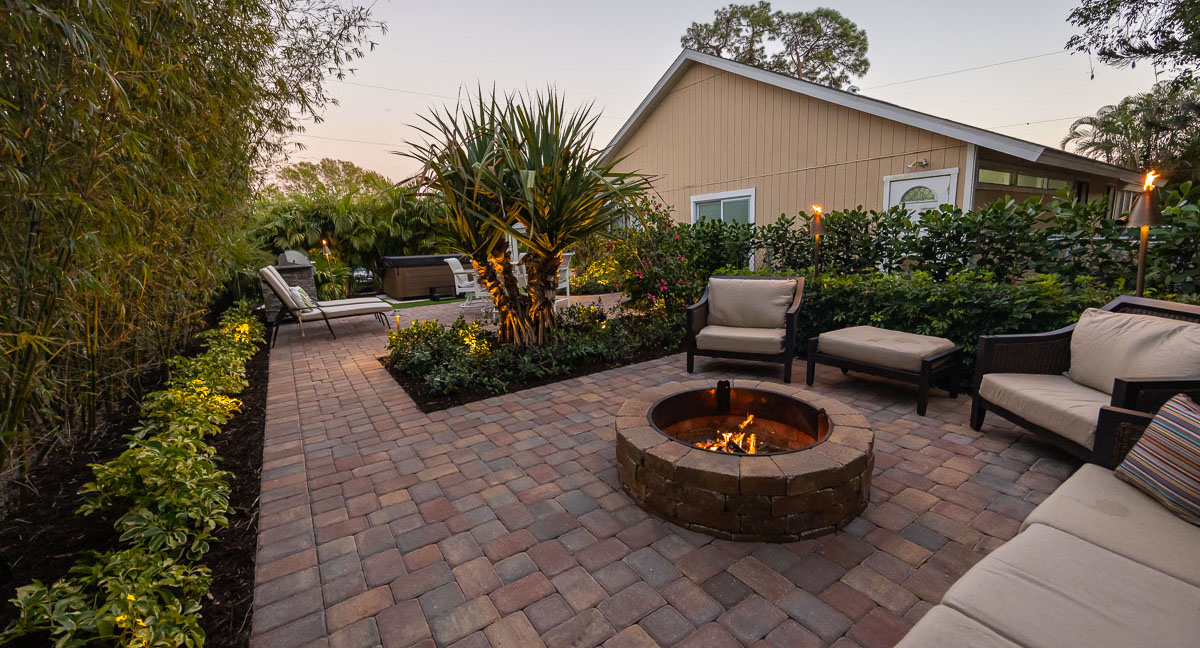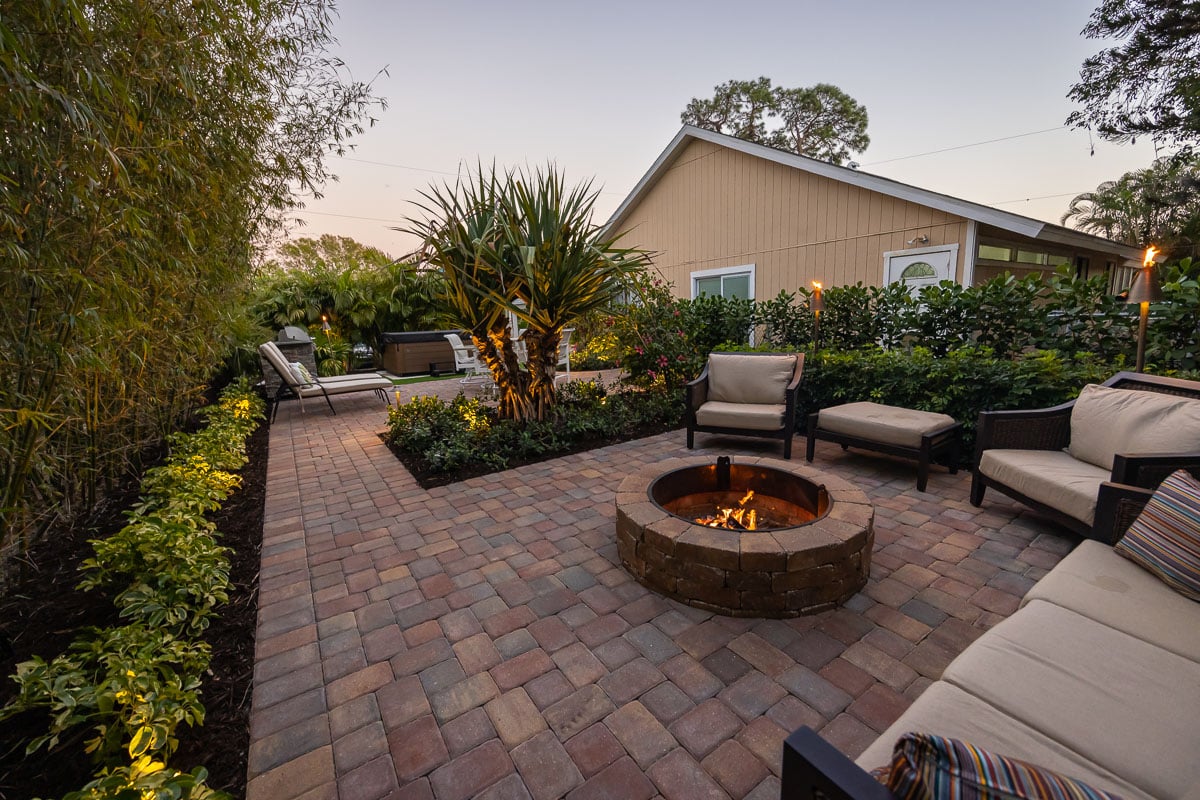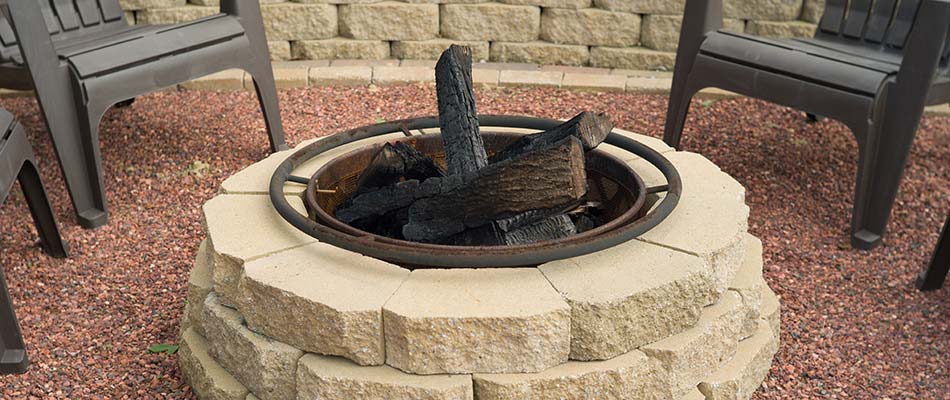


There’s nothing quite like enjoying a starry night by sitting around a cozy fire pit with friends and family. Fire pits are trendy in terms of property improvements and entertainment, and it's simply a pleasant way to spend an evening outdoors.
With that being said, there is one important choice that you have to make when it comes to planning your fire pit: wood burning or gas burning? Ultimately it’s going to come down to personal preference, but we’ve broken down some of the comparison points to help make this decision a little easier for you.
Ease of use should definitely be a consideration before scheduling your installation. If you're a person that likes quick processes and fast results, then it's time for you to tune in. Gas simply requires you to push a button on the fire pit. No, really. That’s all it takes! Occasionally you will have to change the propane tank, and you may even be able to hire someone to do that for you. But other than that, there's nothing else required for you to start up your gas fire pit.
People who like to stick to tradition and good ole' fashion ways of doing things would love this choice. Wood burning fire pits, on the other hand, requires, well, wood. However, wood isn’t hard to get. You can often use wood from your yard (if you have it) or make friends with the neighbors. For a more consistent source of wood, however, you may need to buy firewood and also try to find an area to store the wood—it needs to be covered but also stored away from your house.
Gas fire pits are much more expensive upfront (almost double the cost of a wood fire pit), especially if you have to connect a new gas line. Running a gas line from your home to a fire pit can range in cost, from hundreds to thousands, They also contain complex engineer-burner systems, valves, hoses, and ignitions that are pretty expensive to repair or replace.
Woodfire pits have a very low start-up cost because there are no fancy electronics or hookups. Besides the wood, all you really need are logs of wood, lighter fluid, and a lighter.

Both types of fire pits require a little bit of maintenance. Gas fire pits require cleaning off the exterior and checking the gas lines occasionally. If you ever experience smells coming from a gas fire pit, have it checked out immediately.
Wood requires you to clean out the fire pit to remove soot and ash periodically. Creosote can build up on the surfaces of a wood-burning fire pit, and cleaning it can be messy and inconvenient, though you can hire a chimney professional to do it for you.
In general, gas fire pits are MUCH safer than wood fire pits. The one big concern is a gas leak in your lines, but it’s easy to tell when there is a gas leak by the smell. Call a professional if you smell gas.
Wood can create creosote buildup, which can cause a bigger fire than you intend if it’s not cleaned properly. It will also give off smoke that can be harmful to those with asthma, and smoke in your eyes is not fun either. You need to watch for flying sparks and ensure that the embers are completely put out.
Fire pits add warmth and entertainment to cool nights. Make the best use of your property by installing a gas or wood-burning fire pit. Call us today at (941) 993-2442 to discuss your fire pit options and schedule an installation for your property in Sarasota, Siesta Key, Longboat Key, FL, or a nearby city.